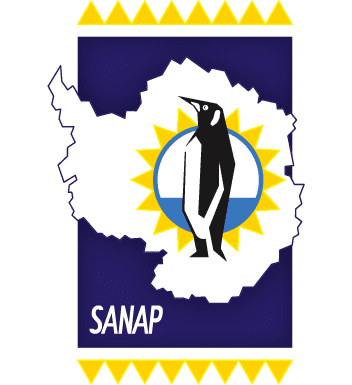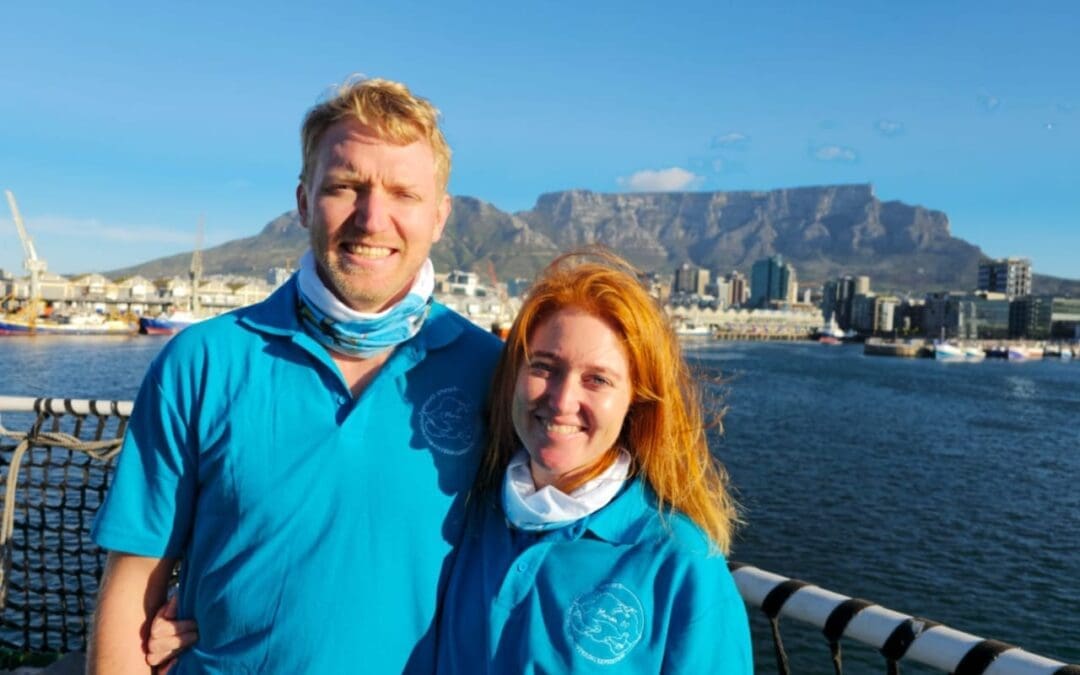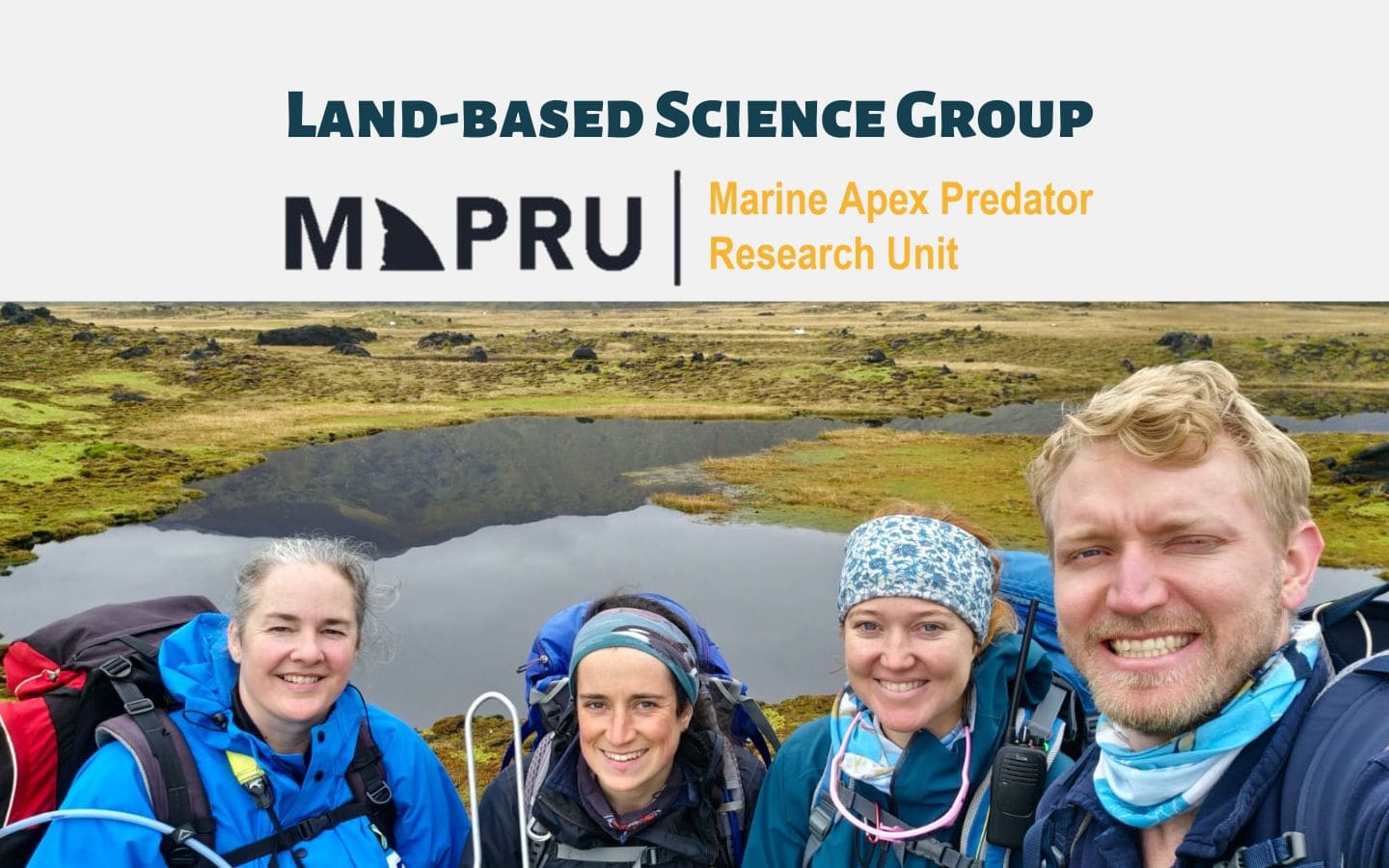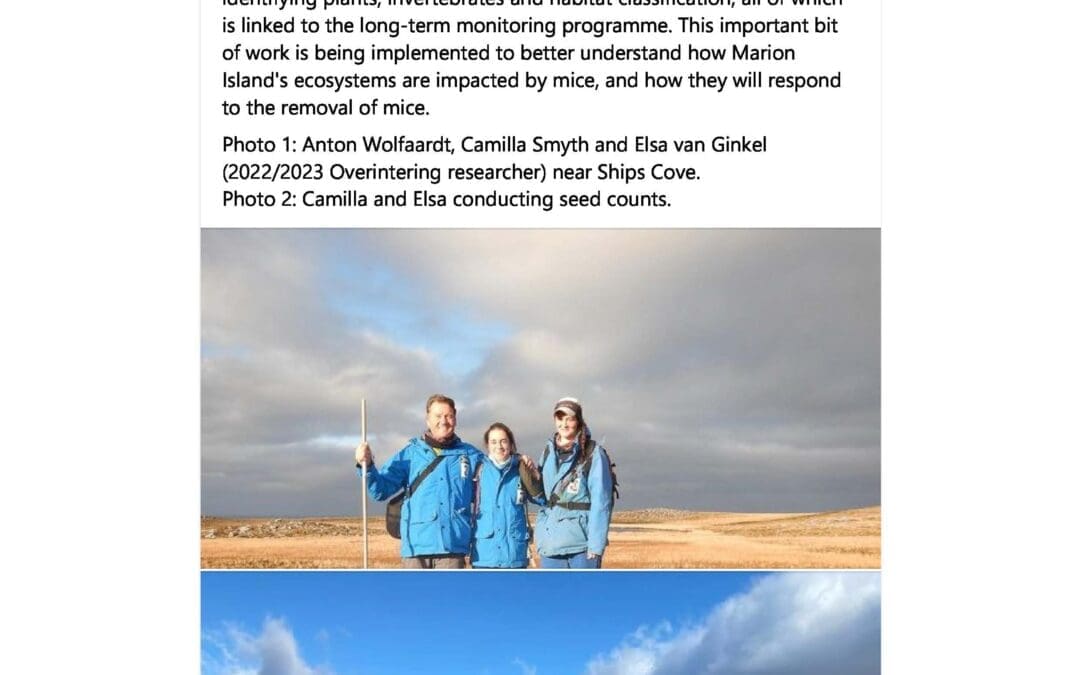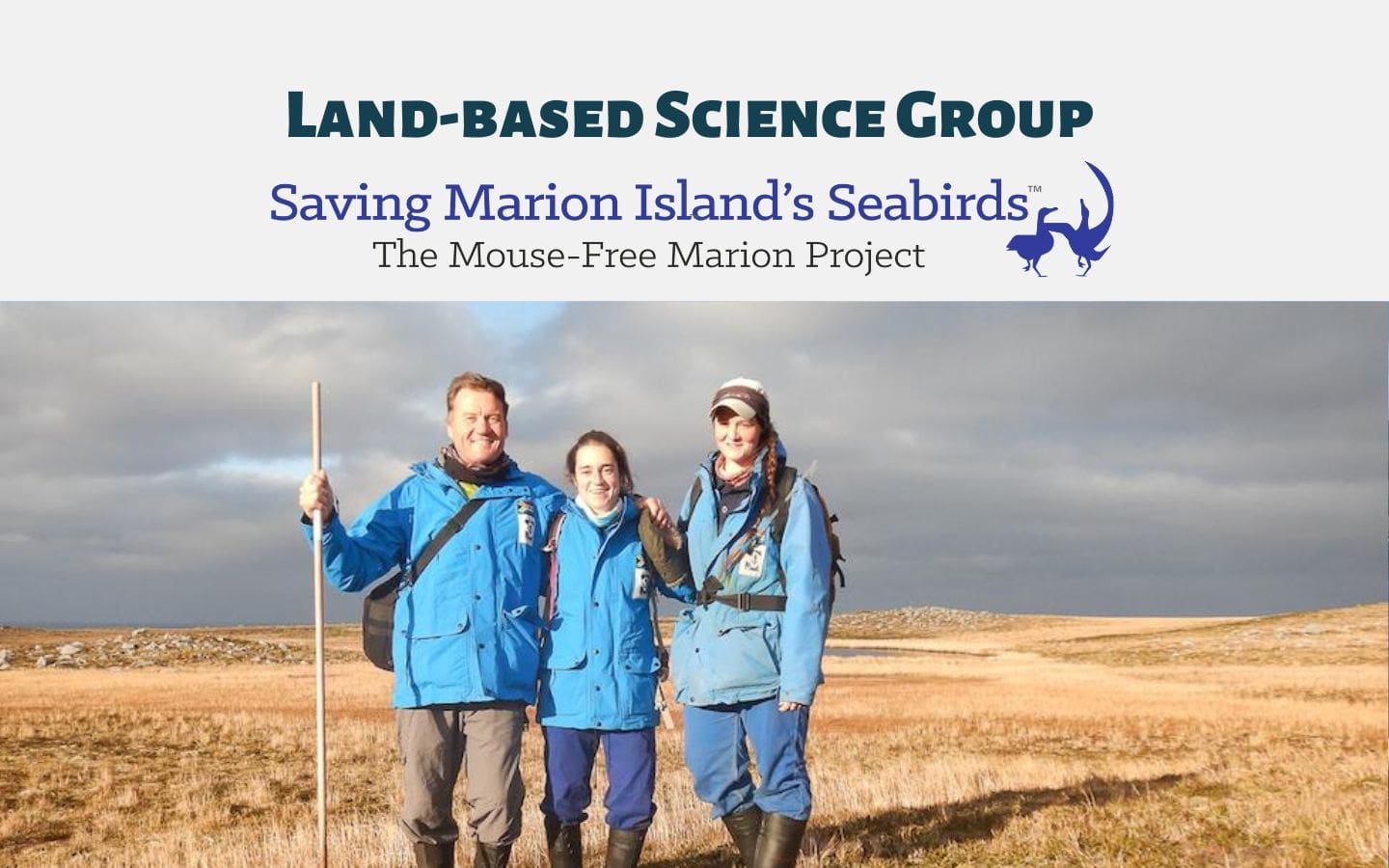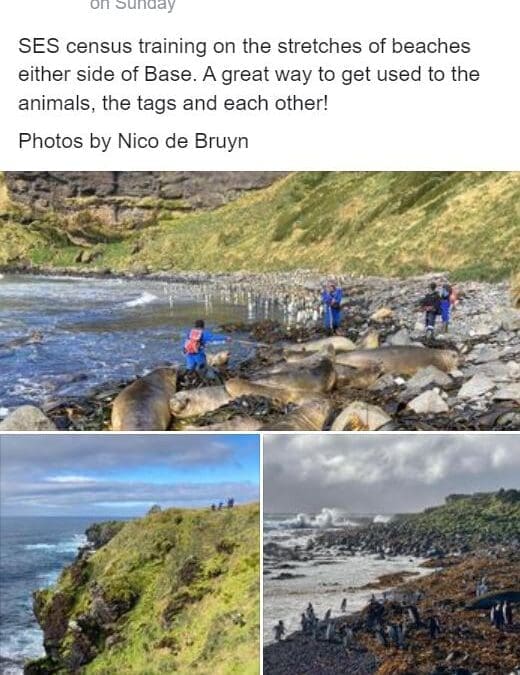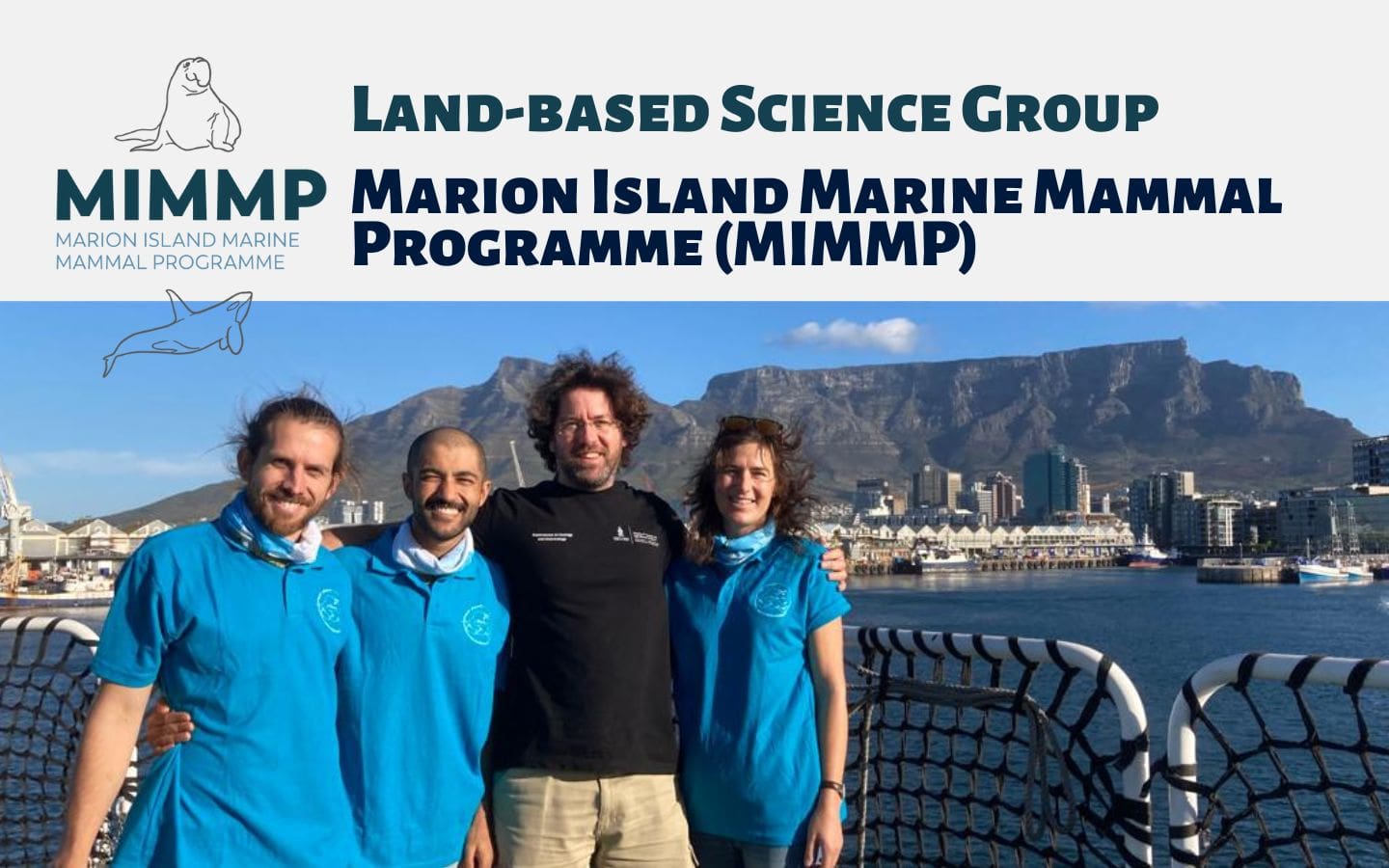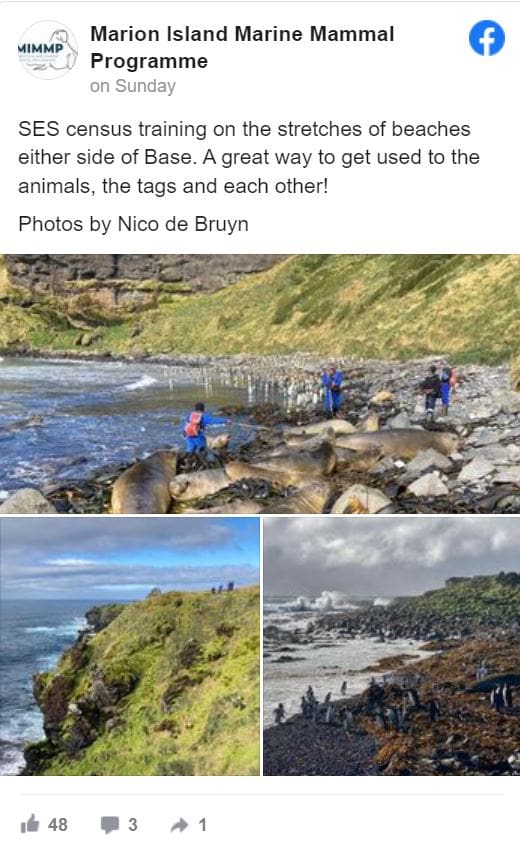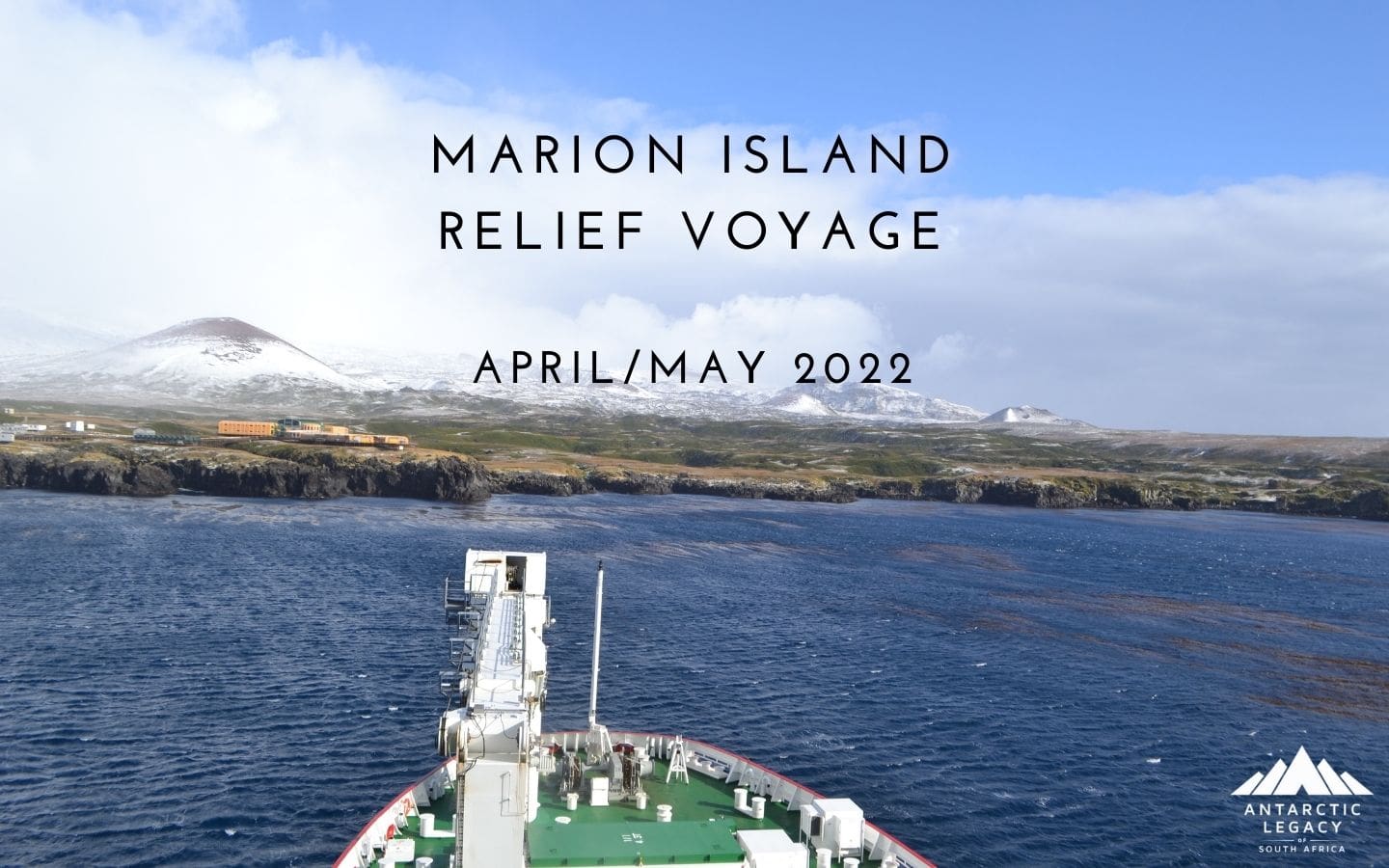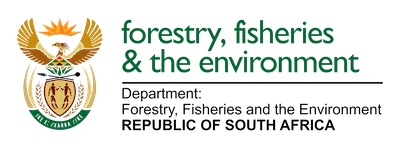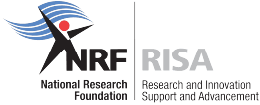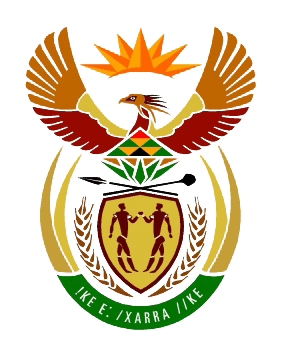
by Ria Olivier | Apr 29, 2024 | Marion Island, Research, Take-Over Operations, Uncategorised
Marion Island Take-Over 2024 Ornithology Projects: Avian scavengers as indicators of recovery of an island biota and the FitzPatrick long-term monitoring of Albatross and Giant Petrels.
The activities during the take-over 2024 will be divided into (1) completing the activities of the 2021/23 SANAP project on avian scavengers, and (2) ensuring the smooth passing of the FitzPatrick Institute seabird long-term monitoring on to the South African Polar Research Infrastructure (SAPRI).
 ABOVE: Michelle Jones (M80), Vanessa Steven (M81), Prof Susie Cunningham (UCT FitzPatrick PI), Rhiannon Gill (M81), Prof Peter Ryan (UCT FitzPatrick), Chris Jones (M80)
ABOVE: Michelle Jones (M80), Vanessa Steven (M81), Prof Susie Cunningham (UCT FitzPatrick PI), Rhiannon Gill (M81), Prof Peter Ryan (UCT FitzPatrick), Chris Jones (M80)
Avian scavengers as indicators of recovery of an island biota : Since 2021, our SANAP project focussed on the three poorly known avian scavengers: Brown Skua, Kelp Gull, Black-faced Sheathbill, as well as some of the skua’s prey, the burrowing seabird species. Our project filled identified scientific gaps that were crucial for best planning of the mouse eradication and development of appropriate mitigation measures, and established baselines for the scavenger guild and their prey base against which the impact of a successful mouse eradication can be measured in years to come. The takeover 2024 will see the closure of this project that we are aiming to restart at the time of the mouse eradication.

 Above: Chris and Michelle Jones working with the Wandering Albatross during overwinter period
Above: Chris and Michelle Jones working with the Wandering Albatross during overwinter period
The FitzPatrick long-term monitoring of Albatross and Giant Petrels: The long-term demography monitoring of Wandering and Grey-headed Albatrosses and Northern Giant Petrels at Marion Island was started by the FitzPatrick Institute of African Ornithology (UCT) in the early 1980s. To ensure its continuity for years to come, it will become SAPRI’s responsibility from April/May 2024. In the forthcoming takeover, all information regarding the monitoring will be passed on to SAPRI to ensure the continuity in the data collected. Further, the annual whole island count of Grey-headed Albatross fledglings will be conducted and Wandering Albatrosses will be carefully checked to detect any potential mouse injuries that were first detected in breeding adults in April 2023.

 (left) Michelle Jones with Grey-headed Albatross and (right) Chris Jones with Common Diving Petrel
(left) Michelle Jones with Grey-headed Albatross and (right) Chris Jones with Common Diving Petrel
Principal Investigators
Take-Over Research team
Overwintering team 2023/24:
- Michelle Risi Jones (NMU/SAPRI)
- Christopher Jones (NMU)
- Text: Dr Maelle Connan
- Images : Chris and Michelle Jones

by Ria Olivier | May 10, 2023 | Current Event, Marion Island, News, Overwintering Team, Prince Edward Islands, Research, SANAP, SAPRI, Science, Southern Ocean, Stations, sub-Antarctic, Team member

| TEAM | MAPRU | Affiliation |
| Project Name | Avian scavengers & seabirds |
| Principal Investigator | Dr Maëlle Connan | MAPRU, Nelson Mandela University |
| Co-Investigator | Prof Peter Ryan | Fitzpatrick Institute of African Ornithology, University of Cape Town |
| M79 Field Assistant | Lucy Smyth | MAPRU, Nelson Mandela University |
| M80 Field Assistant | Christopher Jones | MAPRU, Nelson Mandela University |
| M80 Field Assistant | Michelle Risi | MAPRU, Nelson Mandela University and the South African Polar Research Infrastructure (SAPRI) |
This team is studying seabirds at Marion Island and has two projects for the period 2021-2023:
1) Avian scavenger project focusing mostly on Black-faced Sheathbill, Kelp Gull and Brown Skua as well as some of their prey.
2) FitzPatrick long-term monitoring of Wandering Albatross, Grey-headed Albatross and Northern Giant Petrel.
More about the avian scavenger project:
This project started in 2021. It is tightly linked to the Mouse-Free Marion project.
Our aim is two fold: 1) we fill identified scientific gaps at the bird level that are crucial for best planning of the mouse eradication and development of appropriate mitigation measures. We are mostly focusing on three species of avian scavengers: Black-faced Sheathbill, Kelp Gull and Brown Skua and some of their prey. 2) we propose to use the three scavengers as indicators of recovery of the terrestrial ecosystem post-eradication by establishing baselines for the scavenger guild and their prey against which the impact of a successful mouse eradication can be measured in years to come.
More about the FitzPatrick long-term monitoring project:
The FitzPatrick long-term monitoring of Wandering and Grey-headed albatrosses and Northern Giant Petrel started in the early 1980s and has continued ever since. This individual-based monitoring of threatened species allows us to study the threats they face at sea (e.g. fisheries) and on land (e.g. mice) in order to act and decrease these threats and improve the conservation status. The species’ long-term monitoring is crucial as it allows us to decipher abnormal years from long-term trends.
More about the fieldwork:
The two projects above involve for example extensive counts of birds, lots of hiking, observations of bird behavior and record keeping of the activity of known individuals year after year.
What are your plans for this takeover:
During the takeover, we will be debriefing the year of Lucy Smyth who has worked on the island for our projects since April 2022. We will also train Chris and Michelle for the year ahead in all aspects, from field work to data entry and back-ups.
Follow MAPRU:




Follow PFIAO:




Text by Dr Maëlle Connan.
Images supplied by Christopher Jones.
Featured image: The MAPRU takeover 2023 team. L-R: Dr Maëlle Connan (PI), Lucy Smyth (M79 MAPRU Field Assistant), Michelle Risi (M80 MAPRU Field Assistant) and Christopher Jones (M80 MAPRU Field Assistant). Image taken on the Western side of the island.
Anche Louw, South African Polar Research Infrastructure (SAPRI DPS Node), 10 May 2023

by Ria Olivier | May 5, 2023 | Invasion Biology, Marion Island, Mice Eradication, News, Prince Edward Islands, Research, SA Agulhas II, SANAP, Southern Ocean, Stations, sub-Antarctic, Team member

| TEAM | Mouse-Free Marion |
| Project Name | Longitudinal monitoring of terrestrial diversity to assess the effects of the planned mouse eradication on Marion Island, and bait and mouse trials to inform further planning for the Mouse-Free Marion Project |
| Project Manager | Dr Anton Wolfaardt |
| Collaborator | Prof. Michelle Greve |
| M79 Field Assistant | Elsa van Ginkel |
| M80 Field Assistant | Camilla Smyth |
The Mouse-Free Marion Project is a partnership between the Department of Forestry Fisheries and the Environment (DFFE) and BirdLife South Africa, working towards an operation to eradicate invasive mice from Marion Island.
The mice, which were introduced accidentally some 200 years ago, have caused great harm to the ecology of Marion Island. They feed on indigenous invertebrates, damage vegetation, and have more recently started eating seabird chicks. As a result, the mice are considered to be a major pest to the island. If they are not removed, the ecosystem of the island will continue to deteriorate, and they will likely cause most of the seabirds on the island to become locally extinct. These seabirds will be lost to the island forever.
In order to monitor how the island recovers after the mice have been removed, we are collecting data on aspects of the island that we expect to improve once the mice are gone. These include the vegetation and invertebrates. Colleagues working on other projects are collecting similar data on seabirds.
The reason why it is important to collect this data before the eradication operation is so that we can compare and monitor how the island changes (improves) as a result of the eradication operation – comparing the island’s vegetation and invertebrate features before and after the operation.
More about your plans for this takeover?
The project will make use of data that have already been collected over many years, primarily through the various long-term monitoring projects that have been undertaken at Marion Island over many years. The focus of our work currently is to fill some pre-eradication (baseline) data on vegetation and invertebrates. This particular work was initiated during the 2022/23 period, and will continue in 2023/24. The takeover period will be used to provide training and orientation to the new Marion80 overwintering team member (Camilla Smyth) and for the current Marion79 Mouse-Free Marion overwintering team member (Elsa van Ginkel) to hand over the field-work responsibilities to Camilla.
The work includes standard invertebrate and vegetation survey techniques to establish a baseline that can be used to monitor how these ecological parameters change following the eradication of invasive mice. These surveys will repeat and build on historical surveys that have been undertaken on the island previously.
We will also be undertaking further bait trials and weather monitoring to help inform the planning of the baiting operation.
Latest takeover update from the island (on 26 April 2023)


Check out the Mouse-Free Marion Website!
Follow MFM on social media for the latest updates:


Text and images supplied by Dr Anton Wolfaardt.
Featured image: The MFM takeover 2023 team. L-R: Dr Anton Wolfaardt (MFM Project Manager), Camilla Smyth (M80 MFM Field Assistant) and Elsa van Ginkel (M79 MFM Field Assistant). Photo taken on Marion Island, April 2023.
Anche Louw, South African Polar Research Infrastructure (SAPRI DPS Node), 05 May 2023

by Ria Olivier | May 2, 2023 | Current Event, Mammology, Marion Island, News, Research, SANAP, Science, Southern Ocean, sub-Antarctic

| TEAM | MIMMP |
| NRF-SANAP Funded Project Name | Marion Island Marine Mammals in Changing Environments: Individual Heterogeneity and Population Processes |
| Principal Investigator | Prof Nico de Bruyn |
| Affiliation | Mammal Research Institute, University of Pretoria |
| Takeover Sealer | Yinhla Shihlomule |
| M79 Sealer | Michael Ross |
| M79 Sealer | Banele Dosi |
| M79 Killer whaler | Monica Leitner |
| M80 Sealer | Zafar Monier |
| M80 Sealer | Dylan Seaton |
| M80 Killer whaler | Tammy Eggeling |
What are your plans for this takeover?
Into our 41st uninterrupted year of continuous monitoring! Takeover is mostly dedicated to training the new overwintering personnel, because most of the action (from a seal perspective) on the island take place outside takeover timeframes. Many long-term questions, aimed at understanding the ecology of the various species populations and their interactions with a changing environment, are pursued.
What are the main interest of the MIMMP in the sub-Antarctic region?
We are interested in how seal and killer whale populations change as the environment changes.
In more detail:
MIMMP does long-term ecological monitoring and research of four marine mammal species (Southern elephant seals, Antarctic – and Subantarctic fur seals, and Killer whales) at Marion Island. Focused primarily on population and foraging ecology, interactions between species and with their changing environments.

Check out the MIMMP Website!
Follow MIMMP on social media for the latest updates:



Most recent post on Facebook:

Text and images supplied by Prof Nico de Bruyn.
Featured image: The MIMMP takeover 2023 team. L-R: Dylan Seaton (M80 Sealer), Zafar Monier (M80 Sealer), Prof Nico de Bruyn (PI) and Tammy Eggeling (M80 Killer whaler). Photo taken in Cape Town, on board the S.A Agulhas II, before departure.
Anche Louw, South African Polar Research Infrastructure (SAPRI DPS Node), 02 May 2023

by Ria Olivier | Apr 21, 2022 | Current Event, Marion Island, News, Overwintering Team, Prince Edward Islands, Research, SA Agulhas II, SANAP, Science, Southern Ocean, Stations, sub-Antarctic, Take-Over Operations

The S.A. Agulhas II departed from East Pier, V&A Waterfront on her annual Marion Island relief voyage, Sunday 17 April 2022. The expected time of arrival at the island is today, 21 April 2022.
The first leg of the voyage, Oceanographic Leg 1, from Cape Town to Marion Island, was dedicated to underway sampling (the vessel did not stop for sampling to take place).
Once at the island, take-over operations will commence immediately (weather permitting) – all land-based scientists, National Department of Public Works (NDPW) personnel, and take-over personnel (DFFE) will disembark. Cargo will be slung with helicopters to the island and fuel will be pumped to the island. Hereafter, the vessel will depart from Marion Island on the 2nd Oceanographic leg (annual Research and Monitoring programme around the Prince Edward Islands). The 3rd Oceanographic leg will commence after take-over, on the way back to Cape Town.
What is planned for the 2022 take-over on Marion Island (land-based)
- base and hut maintenance (NDPW)
- base and hut restock
- take-over function
- 79th Marion Island overwintering team (meet the team in next article) to take over from 78th Marion Island overwintering team (M78 – click here).
- take-over projects – scientific fieldwork (see table below)
University of Fort Hare, Department of Geography
Landscape and climate Interactions In a changing sub-Antarctic Environment🔗 |
| Group Leader | Prof Werner Nel |
DFFE: Oceans and Coasts
Southern Ocean and Island Research Programme
|
| Group Leader | Dr Azwianewi Makhado |
BirdLife South Africa & University of Pretoria
Department of Plant and Soil Sciences🔗
Longitudinal monitoring of terrestrial diversity to assess the effects of mouse eradiction on Marion Island, and bait and mouse trials to inform further planning for the project |
| Group Leader | Mr Luis Alberto Rodriguez-Pertierra |
BirdLife South Africa, DFFE
Mouse-Free Marion (Project to Eradicate House Mica from Marlon Island)🔗 |
| Group Leader | Dr Anton Wolfaardt |
South African National Space Agency (SANSA)
Polar Space Weather Studies🔗 |
| Group Leader | Mr Matthew Spoor |
South African Weather Service (SAWS)
Atmosphere and Ocean Surface Research🔗 |
| Group Leader | Mr Vuyo Xelithole |
University of KwaZulu-Natal, School of Mathematics, Statistics and Computer Science
Observing Dawn In the Cosmos🔗 |
| Group Leader | Mr Ronny Joseph |
University of Pretoria, Mammal Research Unit, Department of Zoology & Entomology
Marion Island Marine Mammal Programme (MIMMP)🔗
Marion Island Marine Mammals in Changing Environments: lndividual Heterogeneity and Population Processes |
| Group Leader | Prof Nico de Bruyn
|
Nelson Mandela University, Department of Zoology
Marine Apex Predator Research Unit (MAPRU)🔗
Avian scavengers as indicators of recovery of an island biota |
| Group Leader | Dr Maëlle Connan |
What is planned for the take-over onboard the S.A. Agulhas II (ship-based)
DFFE: Ocean & Coasts Research
DFFE Ship-based Southern Ocean and Islands Research Programme |
| Ocean Physics: Group Leader | Mr Gavin Tutt |
| Ocean Chemistry: Group Leader | Dr Thato Mtshali |
| Ocean Biological: Group Leader | Mr Henry Kakora |
DFFE:Ocean & Coasts, University of Cape Town, Bayworld Centre for Research & Education
SAMOC-SA |
| Group Leader | Mr. Grant van der Heever |
University of Pretoria
Enhanced insights regarding the ecology, evolution, and function of marine microbiomes |
| Group Leader | Mr Choaro Dithugoe |
Land-based DFFE and other take-over personnel
Department of Forestry Fisheries and the Environment (DFFE)
Directorate: Southern Oceans & Antarctic Support
Management, logistics and support for this voyage |
| Departmental Co-ordinator (DCO) | Mr Errol Julies |
| Assistant DCO | Mr Mfundo Tima |
| Admin Officer | Ms Pozisa Matshoba |
| General/Waste Technician | Mr Sabata Setona |
| General/Waste Technician | Mr Mazizi Salmani |
DFFE
Directorate: Oceans, Coasts & Biosecurity Compliance |
| Environmental Control Officer | Mr Thomas Mufanadzo |
DFFE
Directorate: Earth Systems Strategies
Prince Edward Islands Management Authority (Oversight Management Functions) |
| Group Leader | Ms Ntombovuyo Madlokazi |
| Chief Scientists |
| Land-based | Prof Werner Nel |
| Ship-based | Mr Marcel van den Berg |
National Department of Public Works (NDPW)
Maintenance Support |
| Group Leader | Mr Takalani Mudau |
Featured Image: S.A. Agulhas II at Marion Island, May 2014 (Credit: Anche Louw).
Anche Louw, Antarctic Legacy of South Africa, 21 April 2022
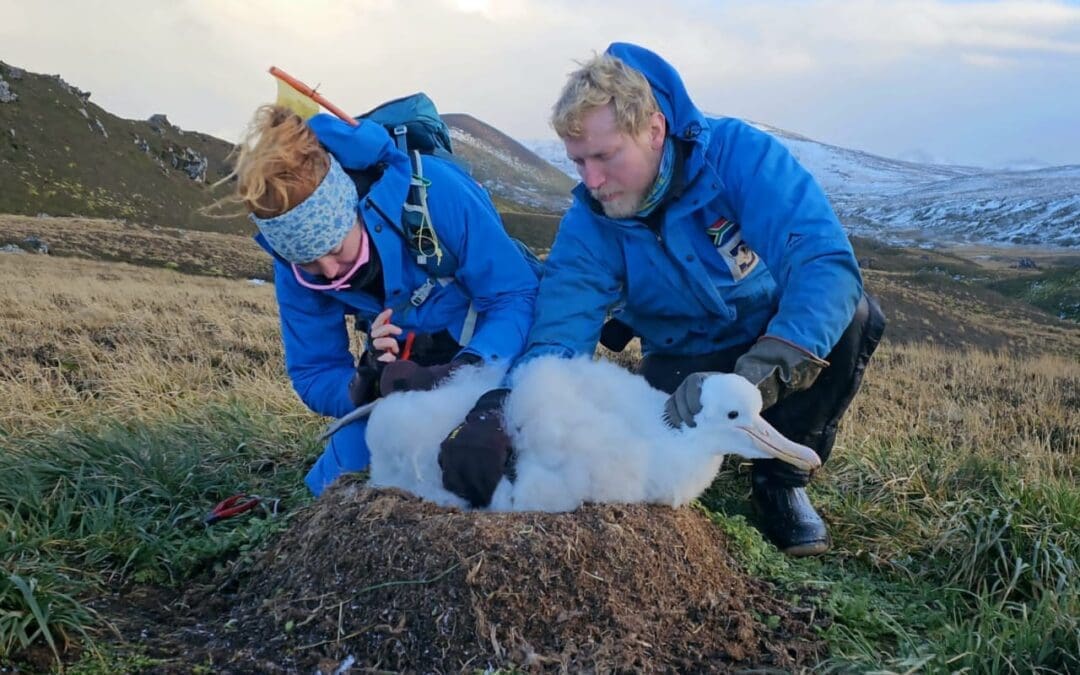
 ABOVE: Michelle Jones (M80), Vanessa Steven (M81), Prof Susie Cunningham (UCT FitzPatrick PI), Rhiannon Gill (M81), Prof Peter Ryan (UCT FitzPatrick), Chris Jones (M80)
ABOVE: Michelle Jones (M80), Vanessa Steven (M81), Prof Susie Cunningham (UCT FitzPatrick PI), Rhiannon Gill (M81), Prof Peter Ryan (UCT FitzPatrick), Chris Jones (M80)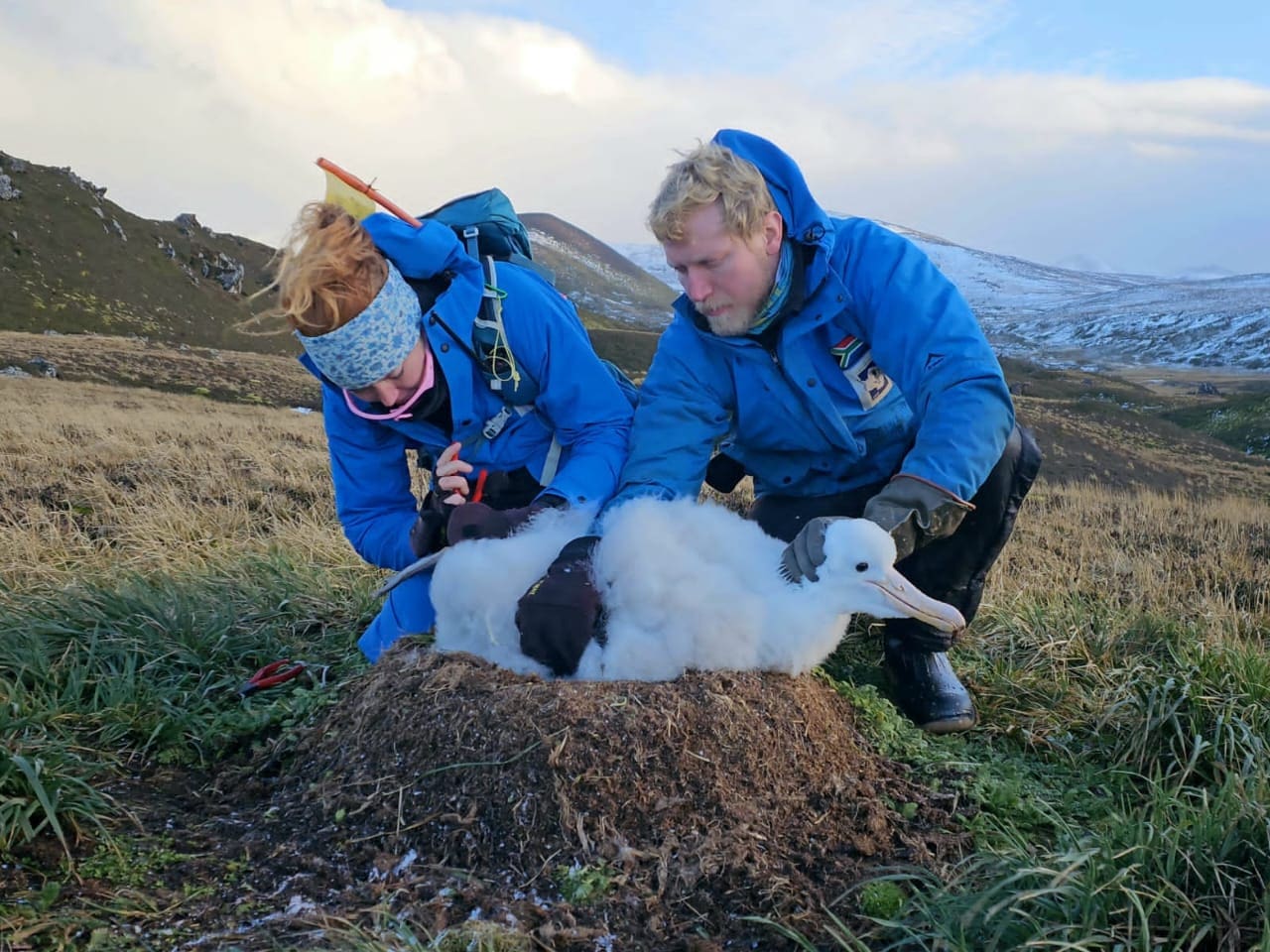
 Above: Chris and Michelle Jones working with the Wandering Albatross during overwinter period
Above: Chris and Michelle Jones working with the Wandering Albatross during overwinter period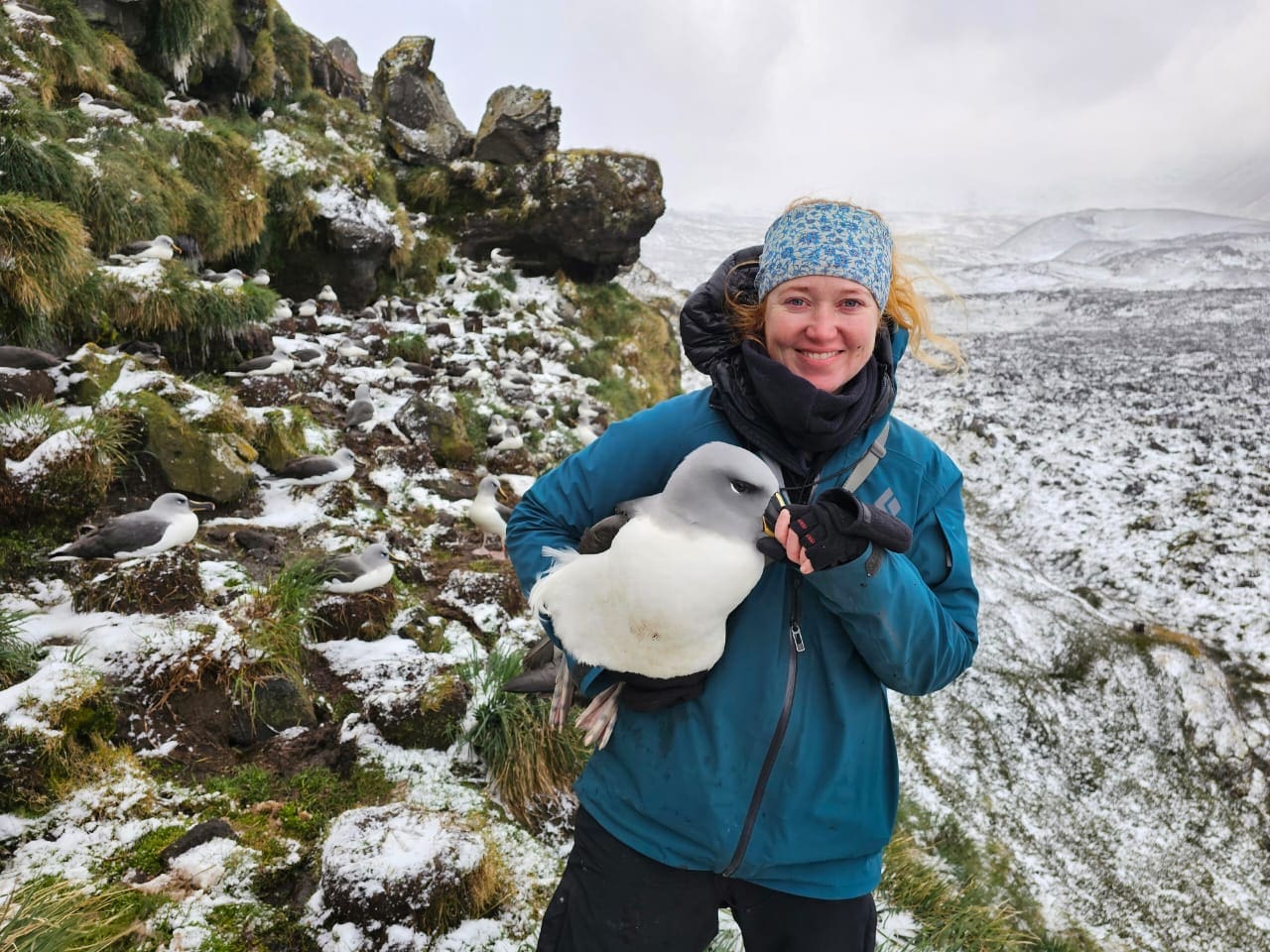
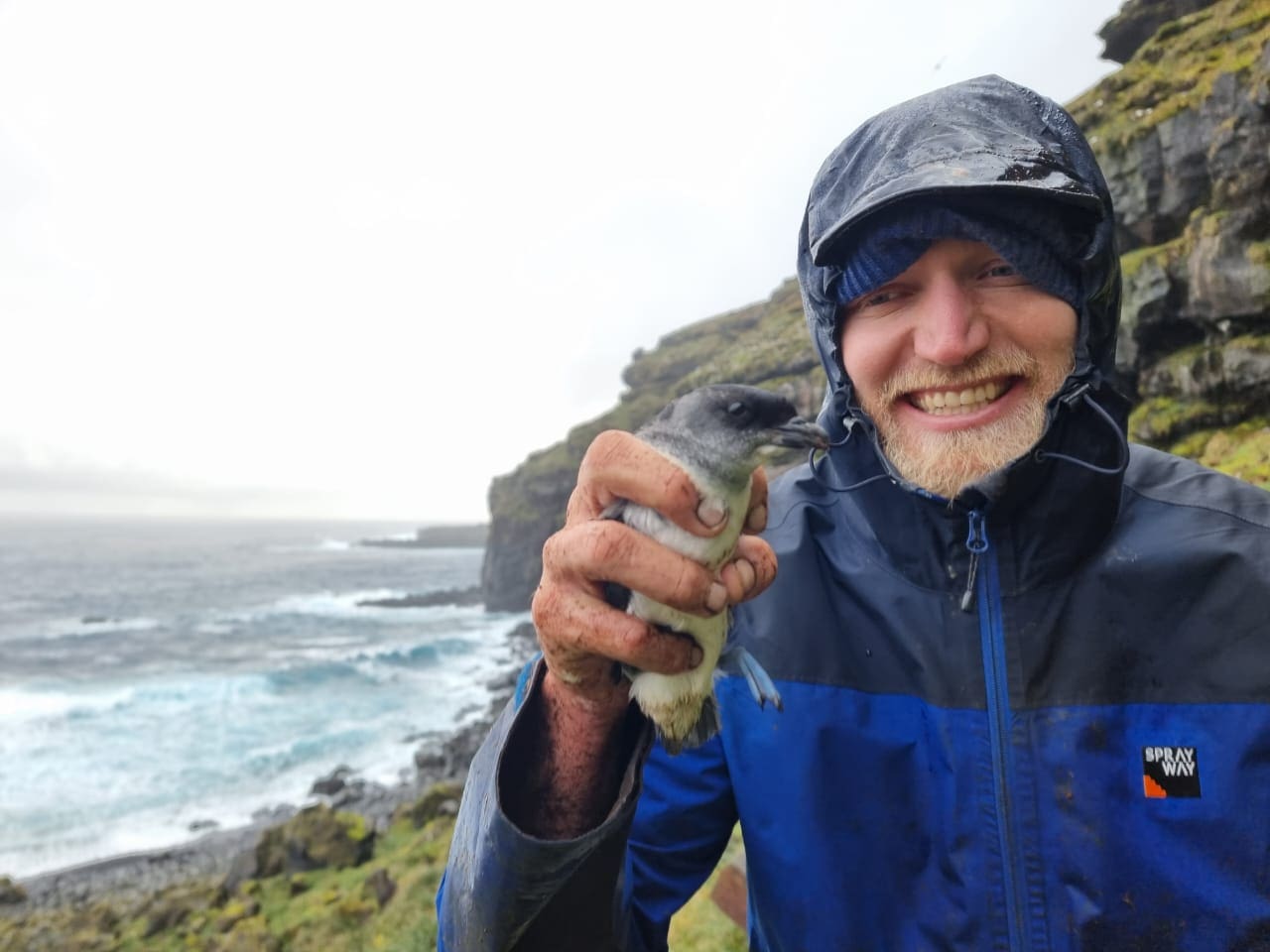 (left) Michelle Jones with Grey-headed Albatross and (right) Chris Jones with Common Diving Petrel
(left) Michelle Jones with Grey-headed Albatross and (right) Chris Jones with Common Diving Petrel